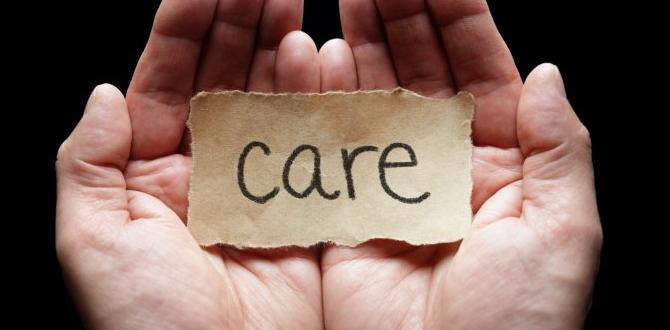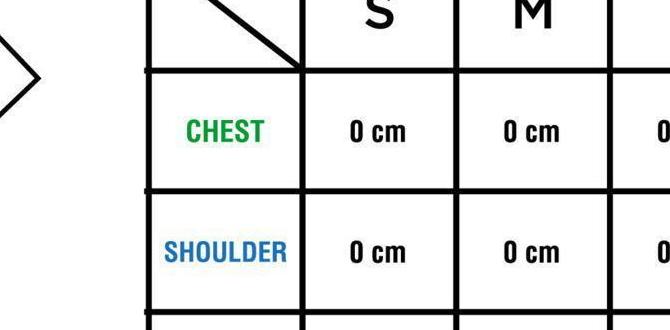Imagine stepping into your backyard and seeing colorful flowers, fresh herbs, and leafy greens. Does that sound impossible in a small space? It’s not! Gardening for small backyards can be fun and rewarding.
Many people think they need a big yard to garden. But that’s a myth! With the right plants and ideas, even tiny areas can bloom. Vertical gardens, container plants, and raised beds can transform small spaces into green oases.
Did you know that just a few pots on your balcony can provide fresh tomatoes all summer? It’s true! You can grow delicious food and beautiful plants in limited space.
By learning gardening tips for small backyards, you can enjoy the beauty of nature at home. Let’s explore how to make the most of your little patch of earth. Your small yard can become a vibrant escape with some creativity and effort.
Gardening For Small Backyards: Tips And Creative Ideas
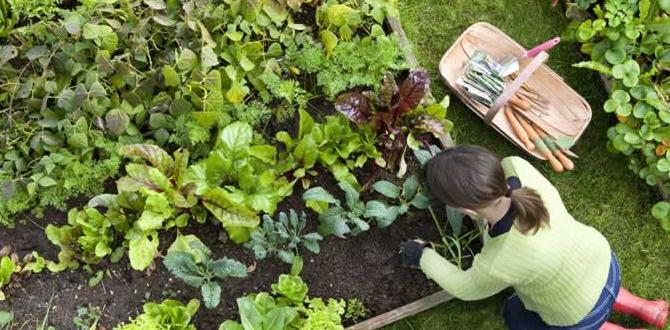
Gardening for Small Backyards
Creating a green space in a small backyard can be exciting and rewarding. You can grow flowers, vegetables, or herbs in limited areas. Think about using vertical gardens or containers to save space. Have you ever tried stacking pots? It saves room and looks great! Consider picking plants that thrive in smaller spaces, like dwarf varieties. Gardening can transform even the tiniest yard into a lush retreat that brings joy and fresh air into your home.Assessing Your Space
Understanding sunlight exposure and shade patterns. Measuring and mapping your backyard dimensions.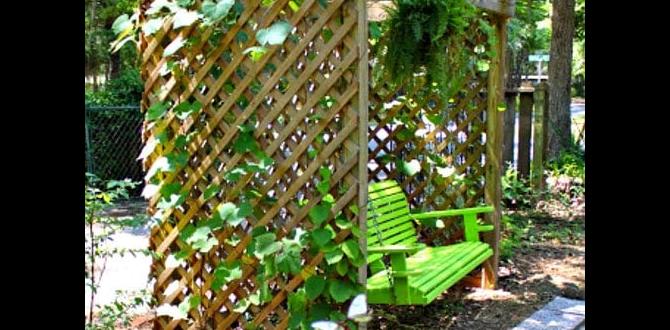
Start by checking how much sunlight your backyard gets. Some plants are sunbathers, while others prefer the shade. Grab a notepad and note the sunny and shady spots. Next, let’s play architect! Measure your space. Knowing your backyard’s dimensions can prevent accidental squirrel collisions when you plant. You could even map it out like a treasure map. Here’s a simple table to help you track sunlight and shade:
| Time of Day | Sunlight Exposure | Shade Areas |
|---|---|---|
| Morning | Full sun | Near the fence |
| Afternoon | Partial sun | Under the tree |
| Evening | Full sun | Near the shed |
This info will help you select plants that will thrive in your tiny Eden. Remember, a happy garden is a successful garden!
Choosing the Right Plants
Selecting plants suitable for small spaces. Incorporating vertical gardening for maximum yield.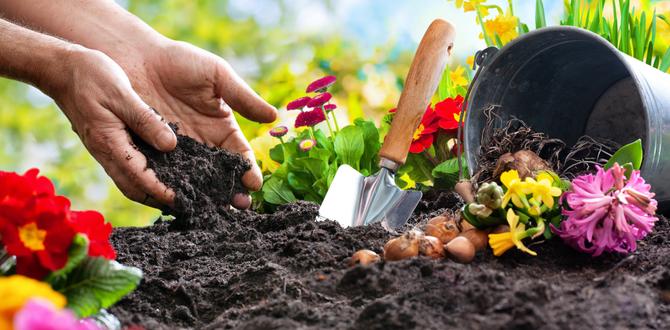
Picking the right plants makes a big difference in small gardens. Choose plants that grow well in tight spaces. Look for compact varieties like herbs, cherry tomatoes, and dwarf flowers. To maximize your space, try vertical gardening. This means using walls or shelves to grow upward.
Some great choices for vertical gardening are:
- Climbing beans
- Peas
- Strawberries
- Succulents
These plants not only save space but also add beauty to your backyard. Enjoy creating your little green paradise!
What plants are best for small gardens?
For small areas, choose compact plants like herbs and cherry tomatoes. Vertical options like climbing beans also work well.
Designing a Garden Layout
Utilizing raised beds and containers. Creating pathways and focal points for aesthetics.For small backyards, using raised beds and containers can be a game changer! These setups can help you grow plants without taking up too much space. Raised beds keep soil warm and make gardening a breeze. Plus, you can arrange containers to create eye-catching pathways that lead visitors around your green oasis. Adding a few whimsical decorations as focal points can turn a tiny patch into a charming retreat where even gnomes would feel at home!
| Feature | Benefit |
|---|---|
| Raised Beds | Keeps soil warmer and increases plant growth. |
| Containers | Maximizes space and allows for easy movement. |
| Pathways | Adds beauty and guides guests, making it feel bigger! |
Soil Preparation and Fertilization
Testing soil quality and pH levels. Choosing organic fertilizers and amendments.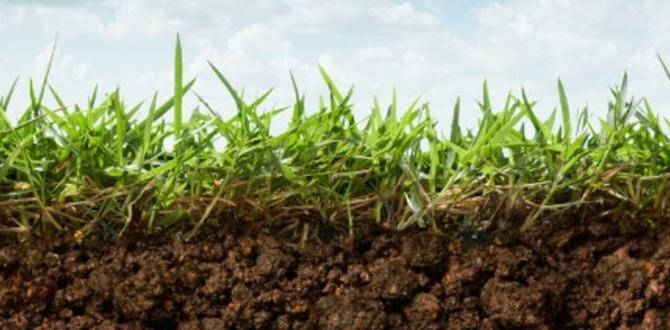
Knowing your soil helps your plants thrive. First, test the soil quality and pH levels. You can find DIY kits at stores. Good soil for plants is often pH 6 to 7. Next, consider using organic fertilizers. They are natural and safe for all plants. Some examples include:
- Compost
- Manure
- Bone meal
- Fish emulsion
These add nutrients back into the soil. This makes your tiny garden full of life!
Why is testing soil important?
Testing soil helps you know what your plants need for healthy growth. It can tell you if your garden needs more nutrients or if the pH is too high. This way, you can make the best choices for your plants.
Irrigation Solutions
Setting up efficient watering systems. Water conservation techniques for small gardens.
Efficient watering is key in small gardens. You can set up simple systems to help. Drip irrigation gives water right to the roots. Soaker hoses soak the soil evenly. Both save water and make plants happy!
Use these water conservation tips:
- Water early in the morning.
- Collect rainwater in barrels.
- Use mulch to keep soil moist.
- Group plants with similar needs.
These methods help your garden thrive while using less water. A little care can make a big difference!
How can I water a small garden efficiently?
You can water efficiently by using drip irrigation or soaker hoses. Collecting rainwater is another smart technique!
Maintenance Tips for Small Gardens
Regular pruning and harvesting strategies. Pest control methods suited for compact spaces.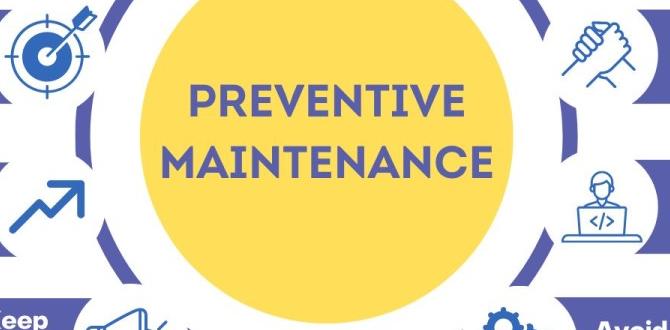
Keeping a small garden thriving doesn’t have to be a mystery! Regular pruning can be fun and helps your plants grow better. Think of it as giving them a haircut! Harvesting is just as important—pick ripe fruits and veggies so your plants keep producing. But watch out for pests! In tight spaces, spray some soapy water to chase away those little troublemakers. Your plants will thank you, and you might even laugh at the bugs trying to escape!
| Task | Tip |
|---|---|
| Pruning | Trim regularly for healthy growth. |
| Harvesting | Pick often to encourage more fruit. |
| Pest Control | Use soapy water to deter pests. |
Seasonal Gardening Guide
Planning your planting schedule throughout the year. Protecting plants from seasonal changes.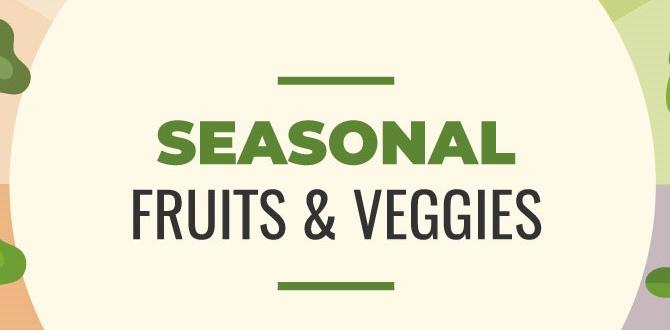
Planning your planting schedule can make or break your small backyard adventure. Think of it as a game of garden chess. Move your plants at the right time for maximum growth. In spring, plant flowers and veggies. Come summer, focus on watering and weeding. Autumn is about harvesting. Winter? Well, that’s a great time to sip hot cocoa and plan for next year!
To keep your plants happy during seasonal changes, provide protection from frost or heavy rain. Consider using row covers or cloches. A well-placed garden blanket can feel like a cozy sweater for your plants. Just like us, they need a little extra love sometimes!
| Season | Planting Tips |
|---|---|
| Spring | Start seeds indoors, plant fresh flowers outside |
| Summer | Water regularly, remove weeds |
| Autumn | Harvest your yummy vegetables, clean up debris |
| Winter | Plan next year’s garden and rest |
Incorporating Sustainable Practices
Composting options for small backyards. Attracting pollinators and beneficial insects.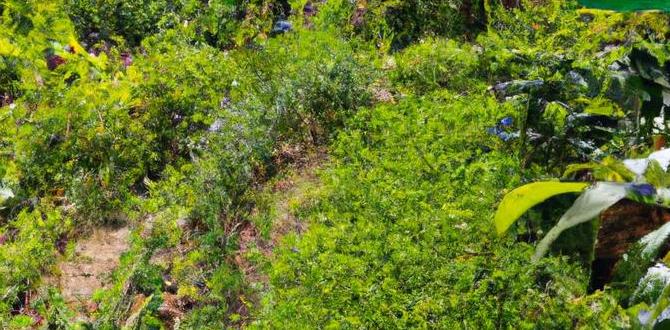
In small backyards, gardening can be both fun and eco-friendly! Composting is a great way to recycle kitchen scraps and yard waste. You can make a tiny compost bin in a corner of your yard. It will turn waste into nutrient-rich food for your plants. Did you know that composting can reduce waste by up to 30%? To attract charming pollinators like bees and butterflies, plant flowers they love. A sprinkle of wildflowers can create a buzzing garden!
| Composting Options | Benefits |
|---|---|
| Kitchen Scraps | Nutrients for plants |
| Grass Clippings | Helps soil moisture |
| Yard Waste | Reduces landfill waste |
With these small steps, you’ll not only have a beautiful garden but also help the environment. Remember, every little bit counts, even if it feels like your backyard is tiny enough to host a gnome convention!
Creative Ideas for Small Garden Decor
Choosing decor that enhances space without overcrowding. Incorporating garden art and functional items.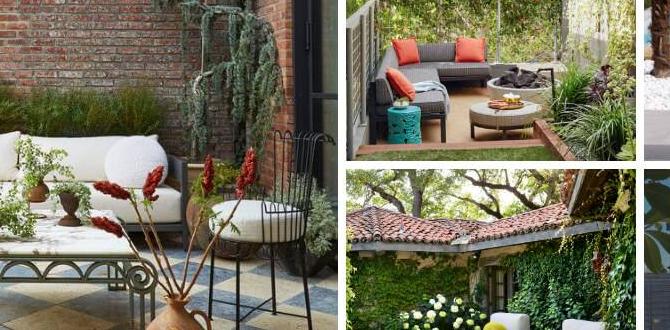
Small spaces can shine with the right decor choices. Opt for decorations that fit well without making your garden feel crowded. Think of colorful pots and small sculptures instead of big statues. Incorporate garden art to add beauty and interest. Functional items like hanging planters or trellises can work too. They save space and look great!
- Use vertical garden fixtures for plants.
- Choose lightweight decorations for easy movement.
- Mix patterns for a fun look without chaos.
What are some easy garden decor ideas?
Simple ideas for garden decor include using bright flower pots or hanging lanterns. Consider creating a small seating area with rustic chairs and a table.
Adapting to Urban Gardening Challenges
Overcoming space limitations in urban settings. Dealing with noise, pollution, and limited resources.
Gardening in a cramped city can feel like trying to squeeze into your favorite pair of jeans after too many pizza slices, but don’t worry! Creativity is your best friend here. Use vertical space by adding shelves or hanging pots. While you might hear honking horns and see a cloud of pollution, plants can help filter that bad stuff out. You can even start a compost bin with kitchen scraps—it’s like a treasure chest for your plants! So, get those hands dirty and dive into the growing fun!
| Urban Gardening Tips | Benefits |
|---|---|
| Use vertical planters | Save space and add height |
| Incorporate noise barriers | Reduce sound pollution |
| Start a compost bin | Create nutrient-rich soil |
Conclusion
In conclusion, gardening for small backyards can be fun and rewarding. You can choose space-saving plants, use vertical gardening, or create container gardens. These ideas help you maximize your limited space. Start small and experiment with different plants. Don’t forget to check out local gardening resources for tips. Let’s get growing and make the most of your backyard!FAQs
What Are The Best Vegetables And Herbs To Grow In A Small Backyard Garden?In a small backyard garden, you can grow tasty vegetables like tomatoes, radishes, and peppers. These plants are easy to take care of and don’t need much space. You can also grow herbs like basil, cilantro, and parsley. These add flavor to your food and are fun to pick!
How Can I Maximize Space In My Small Backyard For Gardening, Using Vertical Gardening Or Container Options?To make the most of your small backyard, try vertical gardening. You can use tall shelves or hang pots on walls. This helps plants grow upwards instead of taking up ground space. Also, use containers like pots or crates for flowers and veggies. They can fit anywhere, like on a patio or porch.
What Are Some Effective Strategies For Improving Soil Health In A Limited Gardening Space?To improve soil health in a small garden, you can start by adding compost. Compost is made from kitchen scraps and yard waste. It gives food and nutrients to your soil. You can also plant cover crops, like clover, to protect and improve the soil. Finally, use mulch to keep the soil moist and block weeds.
How Can I Incorporate Ornamental Plants And Flowers Into A Small Backyard Garden Without Overcrowding?To add beautiful plants and flowers without making your backyard too crowded, you can choose smaller varieties. Look for plants that grow up instead of out, like tall flowers or vines. You can also use pots to place plants in different places. Group plants by color or type to make it look nice without taking up too much space. Finally, leave some open areas to let your garden breathe and look its best!
What Are Some Common Pests And Diseases To Watch Out For In Small Backyard Gardens, And How Can I Manage Them Organically?Some common pests in backyard gardens are aphids, caterpillars, and slugs. You can manage them by hand-picking or using soapy water. For diseases like powdery mildew, keep plants spaced out for good air. You can also use natural remedies like neem oil. Always check your plants regularly!
{“@context”:”https://schema.org”,”@type”: “FAQPage”,”mainEntity”:[{“@type”: “Question”,”name”: “What Are The Best Vegetables And Herbs To Grow In A Small Backyard Garden? “,”acceptedAnswer”: {“@type”: “Answer”,”text”: “In a small backyard garden, you can grow tasty vegetables like tomatoes, radishes, and peppers. These plants are easy to take care of and don’t need much space. You can also grow herbs like basil, cilantro, and parsley. These add flavor to your food and are fun to pick! “}},{“@type”: “Question”,”name”: “How Can I Maximize Space In My Small Backyard For Gardening, Using Vertical Gardening Or Container Options? “,”acceptedAnswer”: {“@type”: “Answer”,”text”: “To make the most of your small backyard, try vertical gardening. You can use tall shelves or hang pots on walls. This helps plants grow upwards instead of taking up ground space. Also, use containers like pots or crates for flowers and veggies. They can fit anywhere, like on a patio or porch.”}},{“@type”: “Question”,”name”: “What Are Some Effective Strategies For Improving Soil Health In A Limited Gardening Space? “,”acceptedAnswer”: {“@type”: “Answer”,”text”: “To improve soil health in a small garden, you can start by adding compost. Compost is made from kitchen scraps and yard waste. It gives food and nutrients to your soil. You can also plant cover crops, like clover, to protect and improve the soil. Finally, use mulch to keep the soil moist and block weeds.”}},{“@type”: “Question”,”name”: “How Can I Incorporate Ornamental Plants And Flowers Into A Small Backyard Garden Without Overcrowding? “,”acceptedAnswer”: {“@type”: “Answer”,”text”: “To add beautiful plants and flowers without making your backyard too crowded, you can choose smaller varieties. Look for plants that grow up instead of out, like tall flowers or vines. You can also use pots to place plants in different places. Group plants by color or type to make it look nice without taking up too much space. Finally, leave some open areas to let your garden breathe and look its best!”}},{“@type”: “Question”,”name”: “What Are Some Common Pests And Diseases To Watch Out For In Small Backyard Gardens, And How Can I Manage Them Organically? “,”acceptedAnswer”: {“@type”: “Answer”,”text”: “Some common pests in backyard gardens are aphids, caterpillars, and slugs. You can manage them by hand-picking or using soapy water. For diseases like powdery mildew, keep plants spaced out for good air. You can also use natural remedies like neem oil. Always check your plants regularly!”}}]}

